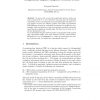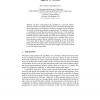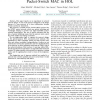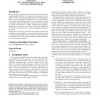719 search results - page 56 / 144 » Proving Security Protocols Correct |
105
click to vote
EUROCRYPT
2006
Springer
15 years 2 months ago
2006
Springer
To prove that a secure key-agreement protocol exists one must at least show P = NP. Moreover any proof that the sequential composition of two non-adaptively secure pseudorandom fun...
CORR
2007
Springer
14 years 11 months ago
2007
Springer
Abstract— We consider the level of information security provided by random linear network coding in network scenarios in which all nodes comply with the communication protocols y...
109
click to vote
ESOP
2005
Springer
15 years 4 months ago
2005
Springer
Electronic voting promises the possibility of a convenient, efficient and secure facility for recording and tallying votes in an election. Recently highlighted inadequacies of imp...
ICNP
2006
IEEE
15 years 5 months ago
2006
IEEE
— This paper reports on an experiment in network protocol design: we use novel rigorous techniques in the design process of a new protocol, in a close collaboration between syste...
CCS
2008
ACM
15 years 1 months ago
2008
ACM
Many security properties are naturally expressed as indistinguishability between two versions of a protocol. In this paper, we show that computational proofs of indistinguishabili...




